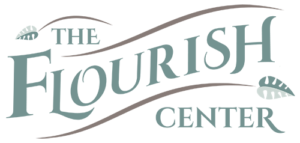
Understanding Trauma: How Therapy Can Facilitate Healing
As society and culture become more open to the importance of mental health, you may have also noticed the growing interest in trauma. We hear the word so often, don’t we? In our conversations with friends, in the movies we watch, and in the offices of our care providers. What happened to us in the past impacts us in the present. What might it look like if you were interested in working with a licensed professional counselor to address past trauma?
Trauma treatment is a specialized form of therapy designed to help individuals process and heal from traumatic experiences. It focuses on addressing the psychological and physiological impacts of trauma, providing strategies to manage and reduce symptoms such as anxiety, depression, and PTSD. Safe trauma therapy includes five phases: 1) safety and stabilization; 2) deconditioning of traumatic memories and responses; 3) reorganizing and integrating memory; 4) re-establishing secure social connections; and 5) integrating into present life with a new sense of self (Onno Van der hart and Judith Herman).
There are many different methods used to facilitate healing from traumatic events; there is no “one size fits all” approach. However, the phases are key, especially when working with childhood and developmental trauma. Before processing painful memories, a person must develop effective resources that help to regulate the autonomic nervous system and emotions. Past events often leave our bodies in a perpetual state of fight, flight, freeze, and collapse. If dissociation is involved, the treatment involves the development of strategies to cope with the loss of connection to present moment experiences. Our brain and body work well to help us in coping at the time of a traumatic event. Later, these strategies may no longer serve us.
In my practice as a licensed professional counselor, I work closely with the client to develop a treatment plan that involves each of the five phases mentioned earlier. We collaborate and move only as fast as the “slowest part of you”. Three types of therapy can be helpful: 1) Sensorimotor Psychotherapy (https://sensorimotorpsychotherapy.org); 2) Eye Movement Desensitization and Reprocessing (EMDR, https://www.emdr.com); and 3) Trauma-Informed Stabilization Treatment (TIST, https://janinafisher.com). As a counselor, I use each of these to support clients in their journey of the creation of internal resources to process trauma, shift out of the prolonged fight-flight-or-freeze reaction of the autonomic nervous system, recognize and self-regulate emotions, and respond calmly and thoughtfully to their world.
If you are interested in learning more about the treatment of trauma, please reach out. You can find me at www.takingrootcounseling.com.


Recent Comments